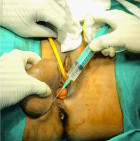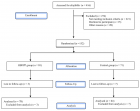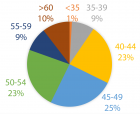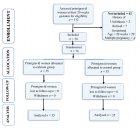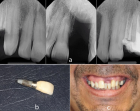Figure 1
Hydrogel-Based Formulations for Drug Delivery to the Posterior Segment of the Eye
AmirHossein Bahmanpour, Maryam Mollazadeh-Bajestani, Maryam Ghaff ari, Fathollah Moztarzadeh and Azadeh Sepahvandi*
Published: 12 September, 2023 | Volume 7 - Issue 1 | Pages: 038-050
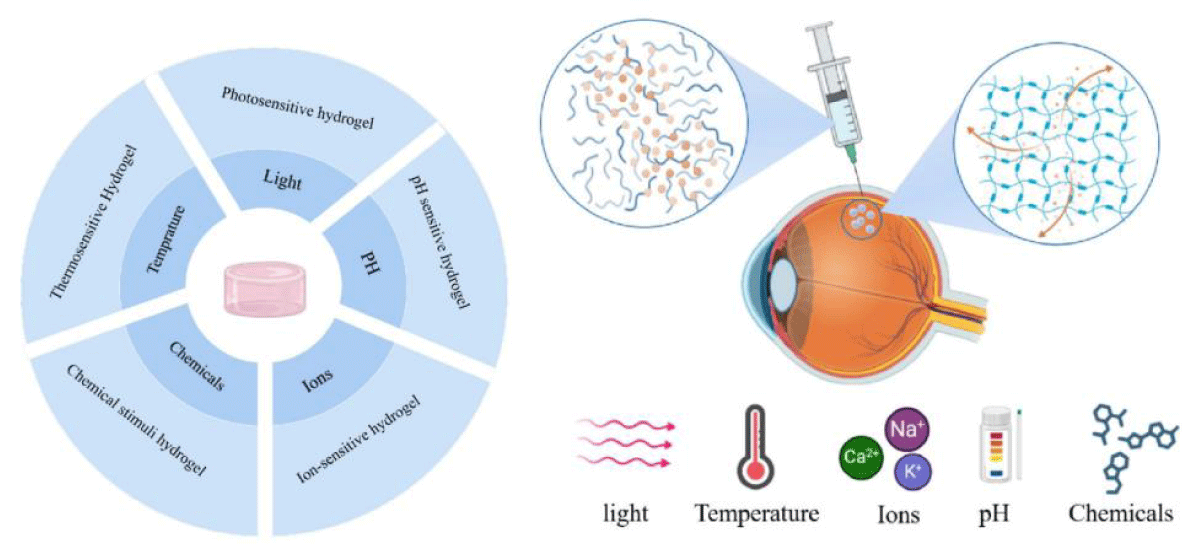
Figure 1:
Figure 1: Schematic figure represents the sol-gel transition in hydrogel. The sol-gel transition is triggered by specific environmental stimuli, such as changes in temperature, pH, light, ions, or the presence of certain chemicals or biomolecules. When these stimuli are applied, the hydrogel undergoes a phase transition, transforming from a sol into a gel or vice versa. This transition allows the hydrogel to change its physical properties, such as swelling, volume, and mechanical strength, in response to the external triggers. Upon reaching the desired location, the hydrogel can undergo the sol-gel transition, releasing the drug at the target site while minimizing systemic exposure and side effects.
Read Full Article HTML DOI: 10.29328/journal.abse.1001024 Cite this Article Read Full Article PDF
More Images
Similar Articles
-
Hydrogel-Based Formulations for Drug Delivery to the Posterior Segment of the EyeAmirHossein Bahmanpour,Maryam Mollazadeh-Bajestani,Maryam Ghaff ari,Fathollah Moztarzadeh,Azadeh Sepahvandi*. Hydrogel-Based Formulations for Drug Delivery to the Posterior Segment of the Eye. . 2023 doi: 10.29328/journal.abse.1001024; 7: 038-050
Recently Viewed
-
Advancing Oral Health and Craniofacial Science through Microchip ImplantsShekufeh Shafeie*. Advancing Oral Health and Craniofacial Science through Microchip Implants. J Oral Health Craniofac Sci. 2024: doi: 10.29328/journal.johcs.1001048; 9: 015-018
-
Hygiene and Care Protocols for Implant-supported Dental Prostheses in Patients with DiabetesHakob Khachatryan, Emma Boshnaghyan, Sevak Papoyan, Gagik Hakobyan*. Hygiene and Care Protocols for Implant-supported Dental Prostheses in Patients with Diabetes. J Oral Health Craniofac Sci. 2024: doi: 10.29328/journal.johcs.1001047; 9: 009-014
-
Treatment Outcome in Patients with Myofascial Orofacial Pain: A Randomized Clinical TrialAnders Wänman*, Susanna Marklund, Negin Yekkalam. Treatment Outcome in Patients with Myofascial Orofacial Pain: A Randomized Clinical Trial. J Oral Health Craniofac Sci. 2024: doi: 10.29328/journal.johcs.1001046; 9: 001-008
-
Anesthesia for epilepsy surgeryAlexandre Pacchioni,João Kazuo Yano,João A Assirati*. Anesthesia for epilepsy surgery. Int J Clin Anesth Res. 2023: doi: 10.29328/journal.ijcar.1001021; 7: 001--005
-
in silico discovery of potential inhibitors against Dipeptidyl Peptidase-4: A major biological target of Type-2 diabetes mellitusNouman Rasool*,Andleeb Subhani,Waqar Hussain,Nadia Arif. in silico discovery of potential inhibitors against Dipeptidyl Peptidase-4: A major biological target of Type-2 diabetes mellitus. Int J Clin Microbiol Biochem Technol. 2020: doi: 10.29328/journal.ijcmbt.1001008; 3: 001-010
Most Viewed
-
Feasibility study of magnetic sensing for detecting single-neuron action potentialsDenis Tonini,Kai Wu,Renata Saha,Jian-Ping Wang*. Feasibility study of magnetic sensing for detecting single-neuron action potentials. Ann Biomed Sci Eng. 2022 doi: 10.29328/journal.abse.1001018; 6: 019-029
-
Evaluation of In vitro and Ex vivo Models for Studying the Effectiveness of Vaginal Drug Systems in Controlling Microbe Infections: A Systematic ReviewMohammad Hossein Karami*, Majid Abdouss*, Mandana Karami. Evaluation of In vitro and Ex vivo Models for Studying the Effectiveness of Vaginal Drug Systems in Controlling Microbe Infections: A Systematic Review. Clin J Obstet Gynecol. 2023 doi: 10.29328/journal.cjog.1001151; 6: 201-215
-
Causal Link between Human Blood Metabolites and Asthma: An Investigation Using Mendelian RandomizationYong-Qing Zhu, Xiao-Yan Meng, Jing-Hua Yang*. Causal Link between Human Blood Metabolites and Asthma: An Investigation Using Mendelian Randomization. Arch Asthma Allergy Immunol. 2023 doi: 10.29328/journal.aaai.1001032; 7: 012-022
-
An algorithm to safely manage oral food challenge in an office-based setting for children with multiple food allergiesNathalie Cottel,Aïcha Dieme,Véronique Orcel,Yannick Chantran,Mélisande Bourgoin-Heck,Jocelyne Just. An algorithm to safely manage oral food challenge in an office-based setting for children with multiple food allergies. Arch Asthma Allergy Immunol. 2021 doi: 10.29328/journal.aaai.1001027; 5: 030-037
-
Impact of Latex Sensitization on Asthma and Rhinitis Progression: A Study at Abidjan-Cocody University Hospital - Côte d’Ivoire (Progression of Asthma and Rhinitis related to Latex Sensitization)Dasse Sery Romuald*, KL Siransy, N Koffi, RO Yeboah, EK Nguessan, HA Adou, VP Goran-Kouacou, AU Assi, JY Seri, S Moussa, D Oura, CL Memel, H Koya, E Atoukoula. Impact of Latex Sensitization on Asthma and Rhinitis Progression: A Study at Abidjan-Cocody University Hospital - Côte d’Ivoire (Progression of Asthma and Rhinitis related to Latex Sensitization). Arch Asthma Allergy Immunol. 2024 doi: 10.29328/journal.aaai.1001035; 8: 007-012

If you are already a member of our network and need to keep track of any developments regarding a question you have already submitted, click "take me to my Query."






